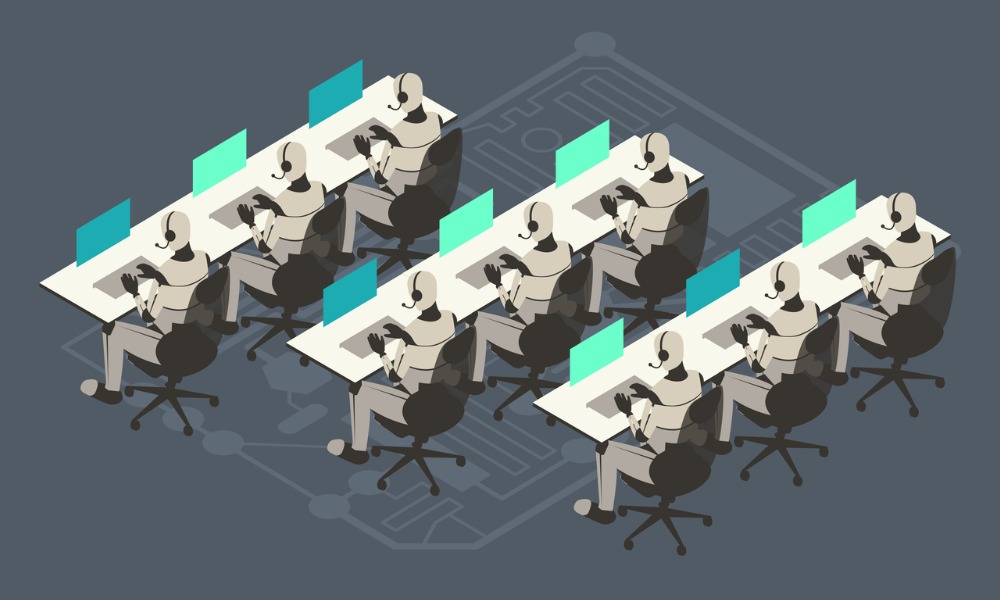Professor claims identifying, incentivizing secret users of AI can lead to 'substantial opportunities'

Why ban the use of AI when you can provide incentives for those who secretly use it to do their job – if they are willing to reveal themselves?
That’s the point one educator makes in a blog post “Detecting the secret cyborgs,” claiming that organizations are at risk of disruption if they cannot find these people.
“It sounds like a science fiction setup: companies are at risk from disruption from AI unless they can convince their secret cyborgs to reveal themselves. But I think it is an accurate summary of the dilemma facing organizations,” says Ethan Mollick, a Wharton professor.
‘Billions have access’ to AI
Right now, Large Language Models (LLM) are a breakthrough technology for individual productivity, but not (yet) for organizations, he claims. And today, “billions of people have access to Large Language Models and the productivity benefits that they bring”.
LLM is a type of artificial intelligence (AI) algorithm that uses deep learning techniques and massively large data sets to understand, summarize, generate and predict new content, says IT consultant Sean Michael Kerner.
“The results are often breakthrough inventions, ways of using AI that could transform a business entirely. People are streamlining tasks, taking new approaches to coding, and automating time-consuming and tedious parts of their jobs,” says Mollick.
A previous survey from ResumeBuilder revealed that 91 per cent of hiring employers are looking for workers with experience in ChatGPT.
“But the inventors aren’t telling their companies about their discoveries; they are the secret cyborgs, machine-augmented humans who keep themselves hidden,” says Mollick.
The problems start with organizational policy, he says, as many companies have banned ChatGPT use, often because of legal concerns. Also, “much of the value of AI use comes from people not knowing you are using it,” he says.
‘Incentivize the cyborgs’
“At least for now, the only way for an organization to benefit from AI is to get the help of their cyborgs, while encouraging more workers to use AI,” says Mollick. “And that is going to require a major change in how organizations operate.”
Mollick is calling on employers to highly incentivize cyborgs to come forward, and expand the number of people using AI to create new ones.
“That means not just permitting AI use, but also offering substantial rewards to people finding substantial opportunities for AI to help,” he says.
Employers should consider things like cash prizes that cover a year’s salary, promotions, corner offices and the ability to work from home forever, simply because the reward is too big.
“With the potential productivity gains possible due to LLMs, these are small prices to pay for truly breakthrough innovation. And large incentives also show that the organization is serious about this issue.”
Business leaders also need to figure out a way to decrease the fear associated with revealing AI use, Mollick says.
Amid all the talks of generative AI, how many Canadian HR departments are actually using it? Very few, according to a survey by the Human Resources Professionals Association (HRPA).
Using AI in the workplace
Here are three steps to using AI in the workplace, as Clarissa Windham-Bradstock, CEO and CPO of Any Lab Test Now, shares in a Forbes article:
- Set up policies about how you will use AI at your company.
- Set goals around the use of AI.
- Train your workforce on how to use this technology.
“There is a way to balance artificial and human intelligence. AI is a tool that has limitless possibilities—but remember, we humans control its use. After all, AI should be viewed as something that can remove some of our mundane everyday tasks, freeing us up to get back to the significance of human interaction and customer service,” says Windham-Bradstock.
“But we’ve got to be careful what we wish for—what I wouldn’t give for someone to pump my gas for me again.”




